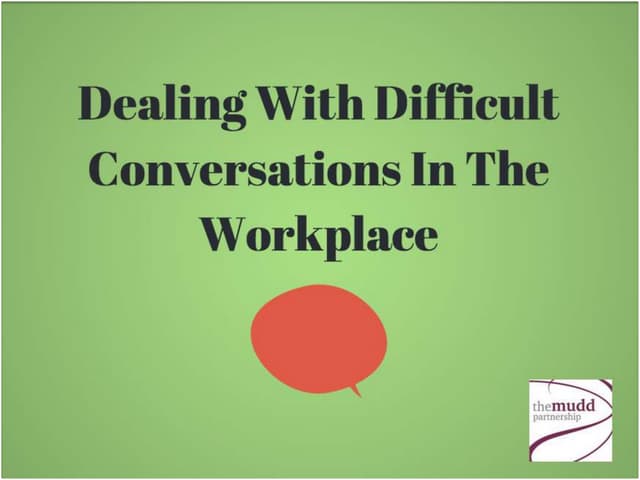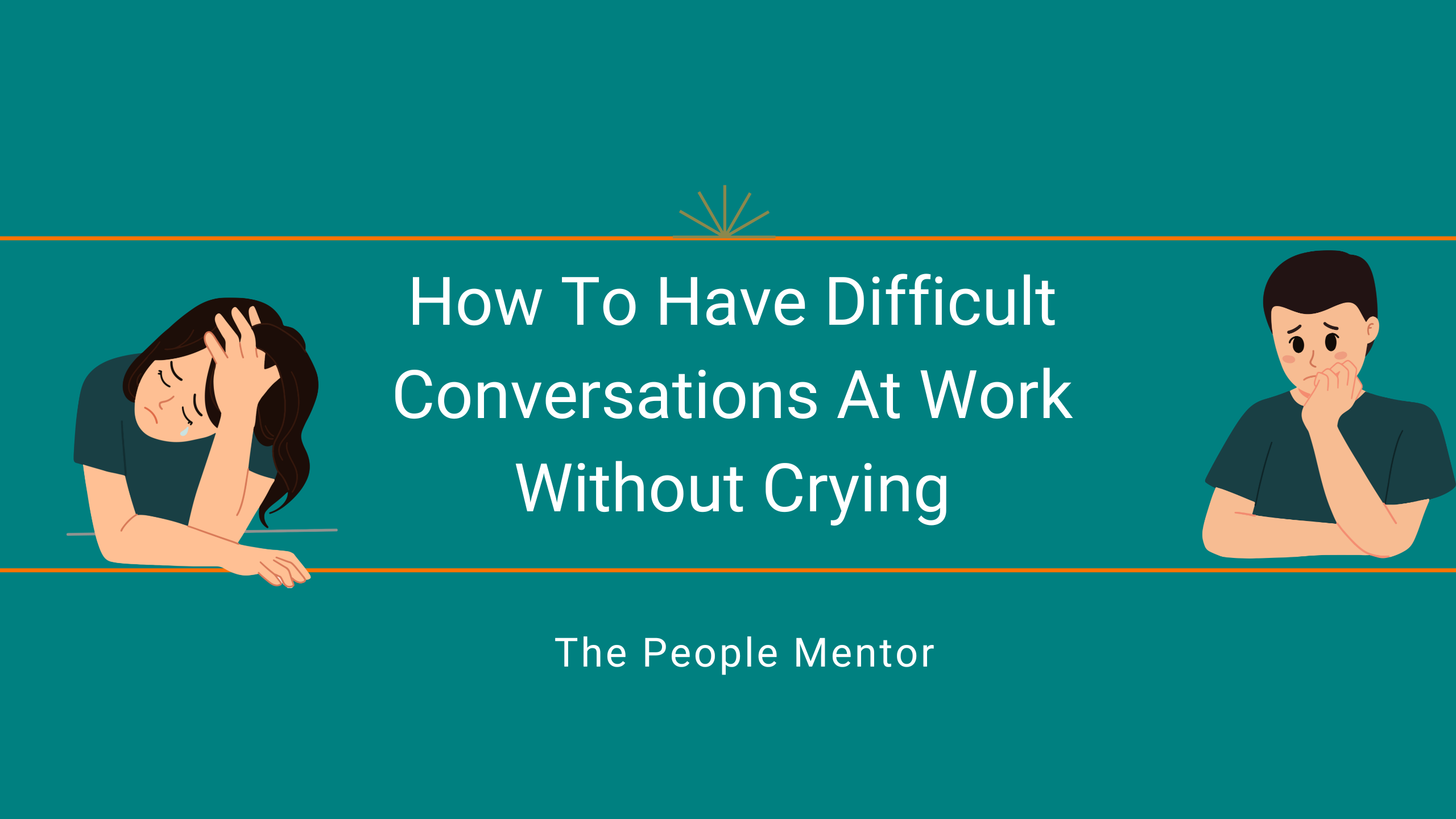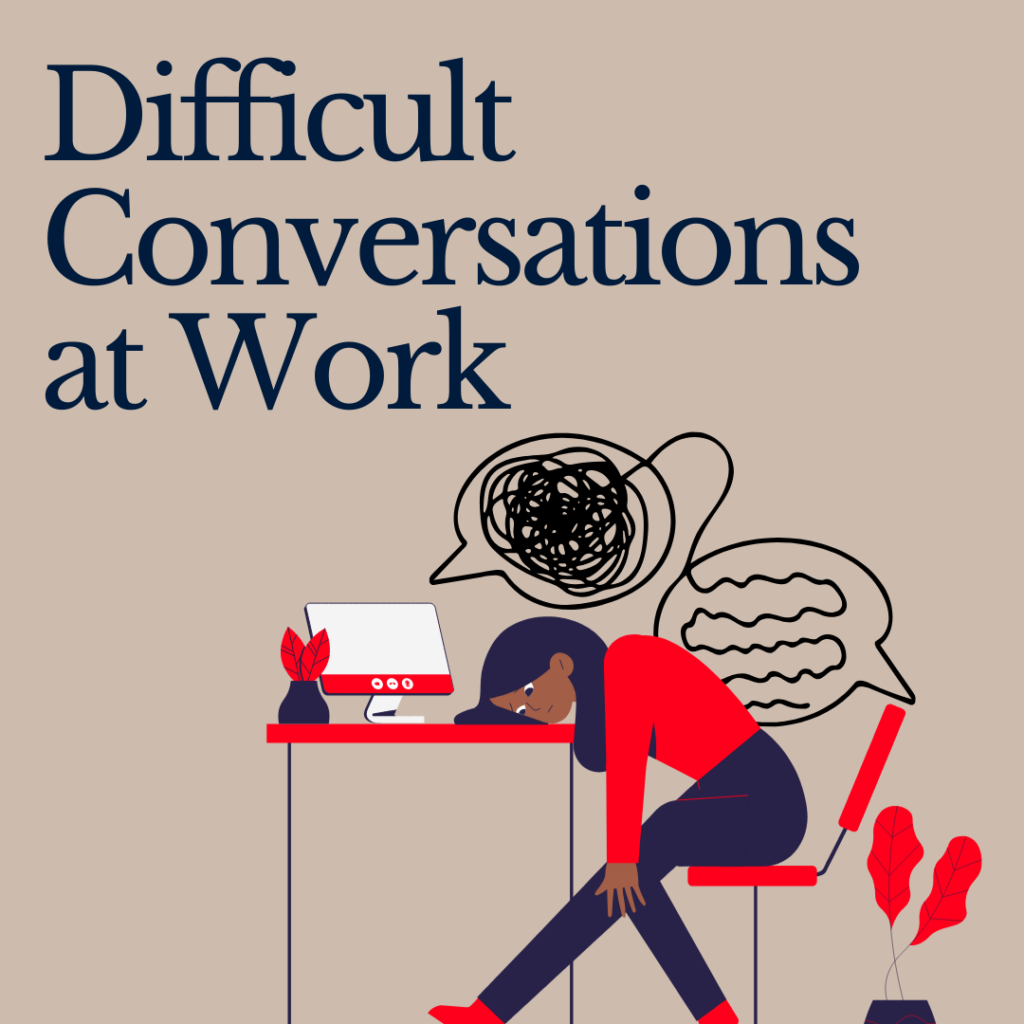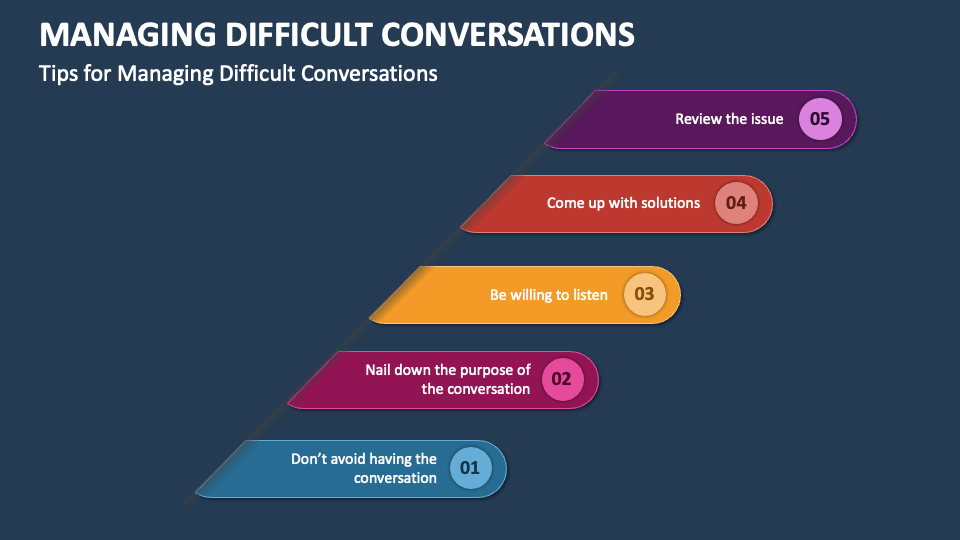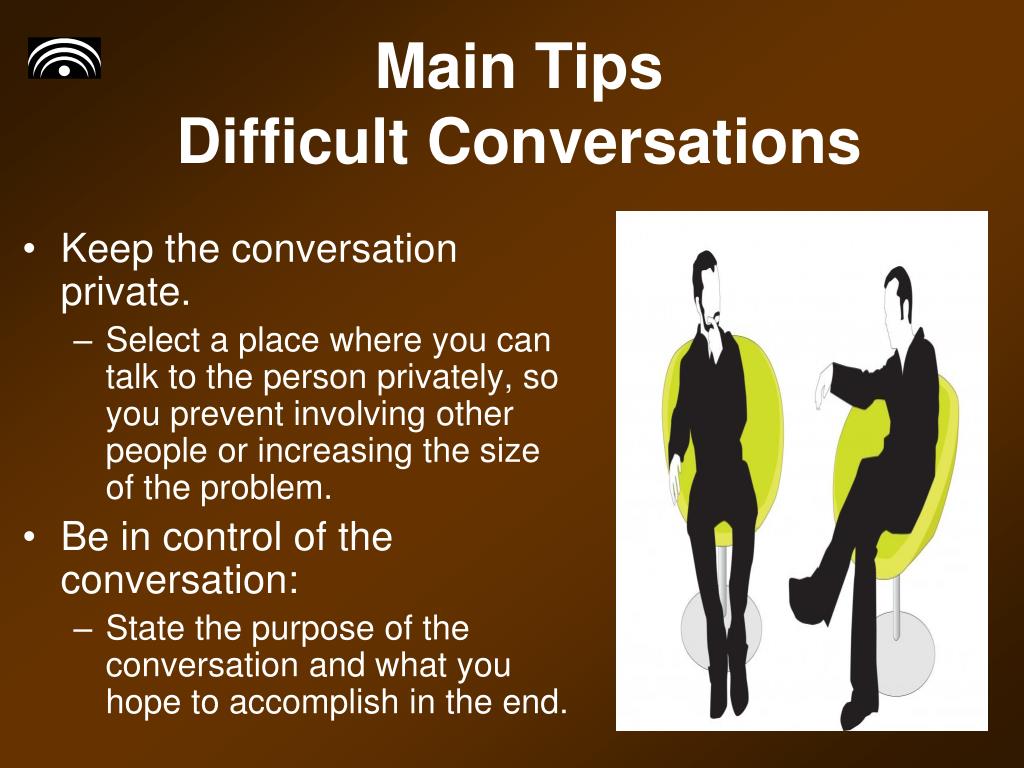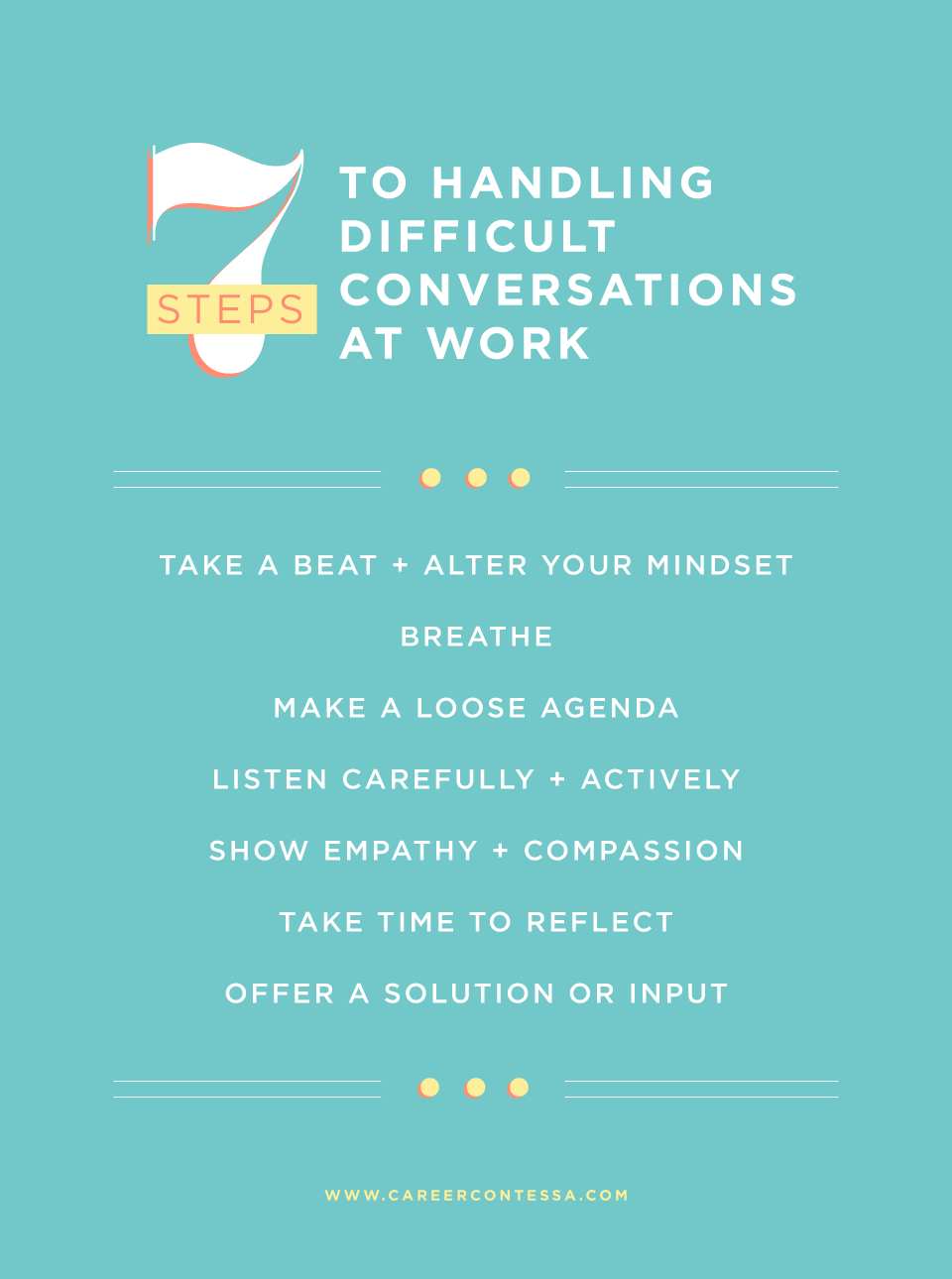Dealing With Difficult Conversations At Work

The modern workplace, a melting pot of personalities and perspectives, often becomes a breeding ground for disagreements. Unaddressed conflicts can fester, leading to decreased productivity, employee disengagement, and even attrition. Navigating difficult conversations, therefore, is not just a desirable skill, but a critical necessity for maintaining a healthy and productive work environment.
The ability to effectively manage uncomfortable dialogues is paramount for organizational success. It fosters a climate of trust and respect, empowering employees to address issues proactively. This article explores the intricacies of handling difficult conversations at work, providing insights from experts and drawing upon reputable sources to offer practical strategies.
Understanding the Root of Difficult Conversations
Difficult conversations often arise from conflicting goals, differing communication styles, or perceived unfairness. Recognizing the underlying cause of the tension is the first step toward a productive resolution.
According to a study by SHRM (Society for Human Resource Management), poor communication is a leading cause of workplace conflict. This underscores the importance of clear and empathetic communication in preventing and resolving disagreements.
Common Triggers and Their Impact
Performance issues are a frequent source of contention. Giving and receiving constructive criticism can be particularly challenging.
Interpersonal conflicts between colleagues, stemming from personality clashes or differing work ethics, can also disrupt team dynamics. Unclear roles and responsibilities, as well as perceived biases in decision-making, further contribute to a volatile environment.
Strategies for Effective Dialogue
Approaching difficult conversations with a structured and empathetic mindset is crucial. Experts recommend careful preparation and a focus on understanding the other person's perspective.
Active listening is a fundamental skill. It involves paying close attention to both verbal and nonverbal cues, and demonstrating genuine interest in what the other person is saying.
"Seek first to understand, then to be understood," advises Stephen Covey, author of "The 7 Habits of Highly Effective People." This principle is particularly relevant in navigating difficult conversations.
Practical Techniques for Resolution
Start by setting a clear and respectful tone. Avoid accusatory language and focus on specific behaviors or situations.
Use "I" statements to express your feelings and perspective without blaming the other person. For example, instead of saying "You always interrupt me," try "I feel frustrated when I'm interrupted during meetings."
Brainstorm solutions collaboratively. The goal is to find a mutually agreeable outcome that addresses the concerns of all parties involved.
The Role of Leadership and HR
Leaders play a critical role in fostering a culture of open communication and conflict resolution. They should model constructive communication and provide employees with the necessary training and resources.
HR departments can provide valuable support in mediating disputes and developing conflict resolution policies. They can also offer training programs on communication skills and emotional intelligence.
According to a 2022 report by Gallup, companies with high levels of employee engagement are more likely to have effective conflict resolution processes in place. This highlights the direct link between a positive work environment and proactive conflict management.
Preventative Measures for Long-Term Harmony
Implementing clear communication protocols and expectations is essential. Regular team meetings and one-on-one conversations can provide opportunities to address issues proactively.
Providing employees with training on conflict resolution and communication skills can equip them with the tools to handle difficult conversations effectively. Creating a culture of psychological safety, where employees feel comfortable expressing their opinions and concerns without fear of retribution, is paramount.
Looking Ahead: Adapting to the Future of Work
As the workplace continues to evolve, with increasing remote work and diverse teams, the ability to navigate difficult conversations becomes even more critical. Organizations must adapt their strategies to address the unique challenges of virtual communication and cultural differences.
Investing in technology that facilitates clear and effective communication, such as video conferencing and collaboration tools, can help bridge communication gaps. Promoting cultural sensitivity and understanding through training and awareness programs is also crucial.
Ultimately, mastering the art of difficult conversations is an ongoing process. By fostering a culture of open communication, providing employees with the necessary skills, and adapting to the changing nature of work, organizations can create a more harmonious and productive environment for all.






